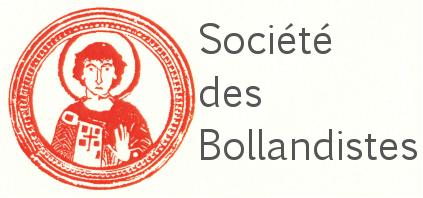The New Handbook of Syriac Literature
Editors: Nathan P. Gibson, David A. Michelson, and Jeanne-Nicole Mellon Saint-Laurent
Introduction:
by Nathan P. Gibson and David A. Michelson
Overview
The New Handbook of Syriac Literature is a reference guide to Syriac works, including their titles and other identifying information, as well as their manuscript witnesses, editions, and translations. Each entry describes a single Syriac work (or a part of a larger work in some cases) and provides a unique identifier for it in the form of a URI. The NHSL is designed to serve as a finding aid for researchers, an authority file for archivists, and a cyberinfrastructure for digital Syriac projects. 1
Volumes
Volume 1:
Saint-Laurent, Jeanne-Nicole Mellon, David A. Michelson, Ugo Zanetti and Claude Detienne, eds. Bibliotheca Hagiographica Syriaca Electronica, Syriaca.org: The Syriac Reference Portal, 2016. http://syriaca.org/bhse. 2
Coverage
At present, the first volume of The New Handbook of Syriac Literature covers the genre of hagiography. The Handbook will be expanded with future volumes to cover all genres of Syriac literature.
The types of works represented in Syriac texts are multitude, ranging from tomb inscriptions of only a few words to voluminous world chronicles; from folk tales to scholarly treatises; and from routine letters and technical jurisprudence to lofty liturgical poetry. 3 Many of these works were originally composed in Syriac, but a good number were translated or adapted from texts in Greek or other languages. In fact, Syriac translators played a key role in the golden age of Arabic philosophy, which in turn was one of the crucial factors leading to the renewed interest in Greek philosophical works during the Italian Renaissance. As is apparent, Syriac literature has relevance for a wide variety of scholars, among them historians of many kinds, archaeologists, philosophers, and theologians. The breadth and depth of this set of texts crosses regional, chronological, and disciplinary boundaries.
The goal of the NHSL is to eventually provide one entry for each Syriac work, from antiquity to the present, regardless of its literary form, genre, or provenance. By the term, "work," we mean "a distinct intellectual or artistic creation," 4 as opposed to an individual manuscript or text-bearing object. Thus, each manuscript may contain many works, and each work may be represented in multiple manuscripts. 5 Each entry in the NHSL is essentially a way of grouping information and resources tied together by an ideal or conceptual work, whether or not that work ever existed in a single given form historically. While the first edition is not intended to be comprehensive, either in the works that it covers or in the details it provides about them, it does rely on some of the most significant and widely used print and digital resources for Syriac literature, including Anton Baumstark's Geschichte der syrischen Literatur mit Ausschluß der christlich-palästinensischen Texte, A Digital Catalogue of Syriac Manuscripts in the British Library based on William Wright's catalogue, and cataloguing information from the Hill Museum & Manuscript Library and eKtobe, among others. As such, the editors believe it provides the broadest and most usable reference tool for Syriac works to date.
Rationale
Syriac scholars have long relied primarily on two kinds of resources to discover and describe Syriac works: (1) literature histories and (2) manuscript catalogues. For most scholars who could not explore manuscript archives in person, these tools necessarily set the research agenda for editing, translating, and discussing texts. As Kristian Heal has observed, "The history of Syriac studies could well be told in terms of the scholars’ search for, or frustrated separation from, the books they wish to study." 6
In recent years, scanned texts and digital manuscript catalogues have made Syriac literature more accessible than ever before. Nevertheless, one usually has to know the shelfmark or bibliographic details of a work for which one is searching, since these resources are spread across the web with no central hub and no uniform identifiers. Without optical character recognition (OCR) to make the text of Syriac editions searchable, one has to rely almost entirely on metadata (such as titles and author names), which is often very poor for scanned texts in particular. The lack of infrastructure means that discoverability and accessibility have continued to set research agendas and that it has so far been impossible to study characteristics or trends of the Syriac literary corpus as a whole.
The current dearth of reference tools for discovering, identifying, classifying, and referencing Syriac works provides an unparalleled opportunity—using digital methods to "re-sort" and "re-orient" the available data in the field of Syriac literature. 7 By including both edited and unedited works from a wide chronological range that are extant in manuscript repositories all over the globe, the New Handbook of Syriac Literature aims to begin enabling scholars to investigate research questions that encompass Syriac literature at its widest extent, whether these studies examine chronological trends, geographical patterns, literary form and genre, or other dimensions yet to be imagined.
Integration with Other Tools and Disciplines
The NHSL is tightly integrated with other Syriaca.org resources, including reference works relating to manuscripts, authors, saints, and places. The NHSL not only links to these entities throughout, but uses their URIs as identifiers, meaning, for example, that a search for works authored by Ephrem (http://syriaca.org/person/13) does not rely on the spelling of the name "Ephrem" and distinguishes these works from those written by other authors with the name "Ephrem." The Relationships sidebar displays works' connections to other Syriaca.org resources.
Syriac literature has close connections to the literature of many other languages, including Greek, Arabic, Ethiopic, Armenian, Georgian, and Coptic, among others. It also offers much to, and benefits greatly from, related fields such as classics, philosophy, and theology, to mention only a few. Thus, the NHSL editors actively seek to link to related projects and share data with them. The approach we have taken can generally be described as a linked open data approach, which makes it possible to dynamically identify related information and pull it from all across the web. The underlying data formats, TEI-XML and RDF are widely used open formats, and all NHSL data is licensed for sharing and reuse with attribution, under a Creative Commons Attribution 4.0 International license.
Technical Details
For details of the NHSL's data model, please see the Syriaca.org documentation, as well as Nathan P. Gibson, David A. Michelson, and Daniel L. Schwartz, “From Manuscript Catalogues to a Handbook of Syriac Literature: Modeling an Infrastructure for Syriaca.org,” Journal of Data Mining and Digital Humanities, forthcoming.
- 1 Regarding the term "cyberinfrastructure," see Gregory Crane, Brent Seales, and Melissa Terras, “Cyberinfrastructure for Classical Philology,” Digital Humanities Quarterly 3, no. 1 (February 26, 2009) [http://digitalhumanities.org:8081/dhq/vol/3/1/000023/000023.html].
- 2 See also Jeanne-Nicole Mellon Saint-Laurent, “Gateway to the Syriac Saints: A Database Project,” The Journal of Religion, Media and Digital Culture 5, no. 1 (May 3, 2016): 183–204 [https://www.jrmdc.com/journal/article/view/78].
- 3 See Sebastian Brock, A Brief Outline of Syriac Literature, Mōrān ʾEthʾō 9 (Kottayam: St. Ephrem Ecumenical Research Institute, 1997).
- 4 IFLA Study Group on the Functional Requirements for Bibliographic Records, “Functional Requirements for Bibliographic Records: Final Report,” International Federation of Library Associations and Institutions, 1998 (revised 26 December 2007), [http://archive.ifla.org/VII/s13/frbr/frbr_current3.htm#3.2]. Note, however, that some NHSL entries might be more properly termed "expressions" in the FRBR vocabulary. For the reasons behind our not distinguishing works from expressions, see Nathan P. Gibson, David A. Michelson, and Daniel L. Schwartz, “From Manuscript Catalogues to a Handbook of Syriac Literature: Modeling an Infrastructure for Syriaca.org,” Journal of Data Mining and Digital Humanities, forthcoming.
- 5 While the NHSL does not methodologically exclude types of works that are typically represented in only one manuscript, such as documentary texts or certain liturgical compilations, it does prioritize works represented in multiple manuscripts.
- 6 Kristian S. Heal, “Corpora, eLibraries, and Databases: Locating Syriac Studies in the 21st Century,” Hugoye: Journal of Syriac Studies 15, no. 1 (2012): 66, [http://www.bethmardutho.org/index.php/hugoye/volume-index/505.html]. See also David Allen Michelson, “Syriaca.org as a Test Case for Digitally Re-Sorting the Ancient World,” in Ancient Worlds in Digital Culture, ed. Claire Clivaz, Paul Dilley, and David Hamidović (Leiden: Brill, 2016), 61–63.
- 7 David Allen Michelson, “Mixed Up by Time and Chance? Using Digital Methods to ‘Re-Orient’ the Syriac Religious Literature of Late Antiquity,” The Journal of Religion, Media and Digital Culture 5, no. 1 (May 3, 2016): 136–82 [https://www.jrmdc.com/journal/article/view/80]; “Syriaca.org as a Test Case for Digitally Re-Sorting the Ancient World,” in Ancient Worlds in Digital Culture, ed. Claire Clivaz, Paul Dilley, and David Hamidović (Leiden: Brill, 2016).
 Fondazione Internazionale
Balzan
Fondazione Internazionale
Balzan 




